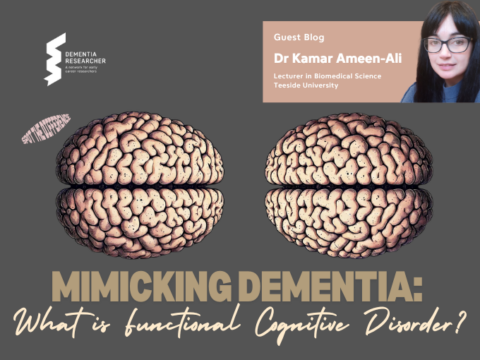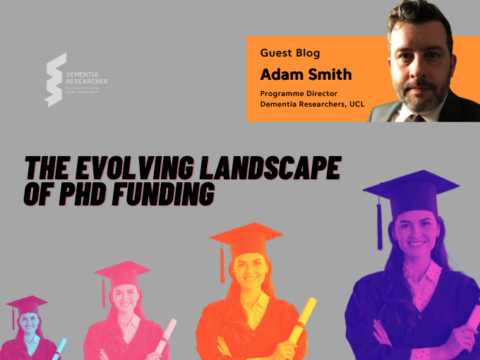In this blog I wanted to talk about an area of dementia research that I have dedicated my career to so far and can often be overlooked, population-based epidemiology. It may not take up the most space at conferences like AAIC, but they are important. This will be the first in a short series of blogs on population studies in dementia research. So first… let’s get into the background.
For epidemiologists’ dementia is of particular importance due to being entwined with population ageing. That is the phenomenon of populations becoming structurally older due to longer life expectancies and declining fertility around the globe.
Acknowledgement of the challenges posed by population ageing led to a growing interest and investment in epidemiological dementia research. This can be seen in the various studies that have been established specifically to investigate dementia epidemiology, as well as by incorporating measures of cognitive function into existing cohort studies such as:
- Rotterdam Study, the Netherlands
- Bordeaux Study, France
- Cognitive Function and Ageing Study (CFAS), UK
- Indianapolis-Ibadan Dementia Project (IIDP), US and Nigeria
- Framingham Heart Study (FHS), US
In recent years the advancement of computing, data science and biostatistics has meant in addition to the traditional cohort study, dementia can be investigated using existing large health and biomedical databases made up of large volunteer cohorts like the Clinical Practise Research Datalink (CPRD) and UK Biobank, or from health insurance data. One issue that often crops up with population cohorts is that although they represent their respective populations it can sometimes be difficult to compare findings from one population to another. To address this there has been exciting developments in research groups coming together to try and harmonise cohorts by modelling the effect of risk factors which may have been measured slightly differently but are similar, when harmonized the combined power of the studies can help us find new understanding of dementia risk.
What are the benefits of population-based study design?
Dementia epidemiology research is not necessarily reliant on population cohorts, secondary data analysis wherever there is sufficient data with: large enough sample sizes, variables of interest and data complex enough to address where statistical power may be lacking. Although large amounts of routine data sources are becoming more available alongside the increasing popularity of AI and machine learning, we must be mindful of the fundamentals of statistical science, checking our assumptions. In many instances there are inherent biases in data sets reliant on volunteers and routine health data, in which case we risk further embedding existing inequalities in research. It is for this reason the core value of population-based studies is unchanged, there is an invaluable link between the studies the populations they recruit on the ground.
The goal of removing bias from our dementia research is central to population study design. In its simplest form a population study is designed to answer research questions in a specific population. The study then can be described as a representative sample of the population meaning we can generalise the findings from this sample back to the whole population, in statistical terms giving the study External Validity, which is not possible in samples which are not recruited to be representative.
The point of this is to achieve and accurate and unbiased estimation of how cognitive outcomes and risk factors for dementia are distributed through the population, which can then be used to determine relationships between risk factors and outcomes free of bias.
So are population studies important to dementia researchers specifically?
I would argue yes, essentially, we define dementia as a decrease in cognitive function over time, how we identify people with these criteria can be influenced by a host of factors including:
- How participants are recruited to the study
- The methods used to measure cognitive function.
- The criteria for diagnosing dementia
- In some cases, the opinions of clinicians
To further complicate things, individual characteristics can affect the identification of dementia, how much education a person has had, having other health conditions and a person’s medical history to name a few.

Globally, the incidence of Alzheimer’s disease and other dementias increased by 147.95% from 1990 to 2019, with 2.92 million cases.
For this reason, we need population studies to help us understand the distribution of cognitive function, estimate the prevalence and incidence of dementia in the whole population (including those who may have been overlooked in previous studies), and investigate the factors that increase or decrease the risk of developing dementia. By examining risk and protective factors and their impact on the population, we can gain insights into the causes and most importantly the prevention of dementia.
There is also an often-overlooked reason why dementia researchers should pay attention to population studies. They provide context for understanding diverse aging populations over time and in different regions, which may not be gained from being limited to lab-based literature. In the past century, societies worldwide have witnessed remarkable advancements in healthcare and increased life expectancy. As a result, there has been a significant rise in the number of older people, particularly those aged 85 and above. This demographic shift also brings with it greater diversity within aging populations.
This is important for the future of dementia research as dementia is so closely associated with increasing age, it is also closely linked to other age-related changes such as functional impairment, falls, incontinence, frailty, and multiple health conditions. It is influenced not only by individual factors but also by historical, societal, and cultural contexts. These contexts can affect how clinicians diagnose and treat dementia, as well as how psychological and behavioural symptoms are recognized. Moreover, they can shape individuals’ life experiences, living conditions, and overall health throughout their entire lives.
To gain a deeper understanding of older individuals in different settings and to examine dementia and cognitive function in our present-day world, it is crucial to conduct population-based studies. By collecting primary data from a representative sample of a specific population they allow researchers to gather information about the diverse experiences of older people in different times and places. By studying a wide range of individuals, population-based studies provide valuable insights into the impact of historical, societal, and cultural factors on dementia and ageing more generally.
This type of research is essential for developing effective strategies to support older populations in diverse settings. By understanding the specific challenges and needs of older individuals in different contexts, policymakers and healthcare providers can develop targeted interventions and improve the quality of care provided to older adults. Population-based studies serve as an important tool for collecting data and informing evidence-based policies and interventions that enhance the well-being and quality of life of older individuals.
I hope you enjoyed this blog covering some background to population-based dementia research. In the next few blogs, I’ll be doing a deeper dive into some of the population studies available to dementia researchers, some of the key findings from population studies that have informed what we know about dementia and some of the techniques and methods used by quantitative researchers. Finally, I would like to acknowledge both Professors Fiona Matthews and Carol Brayne whose work on dementia epidemiology has informed my writing of these blogs.

Dr Connor Richardson
Author
Dr Connor Richardson is a Neuro-epidemiology Research Associate in the Newcastle University Population Health Sciences Institute. Connor is the research statistician for the Cognitive Function and Ageing studies (CFAS) multi-centre population cohort. His research interest lies in using advanced statistical modelling and machine learning to measure dementia risk. Connor blogs about his research, Equality, Diversity and Inclusion and sometimes his Pomapoo’s.

 Print This Post
Print This Post




